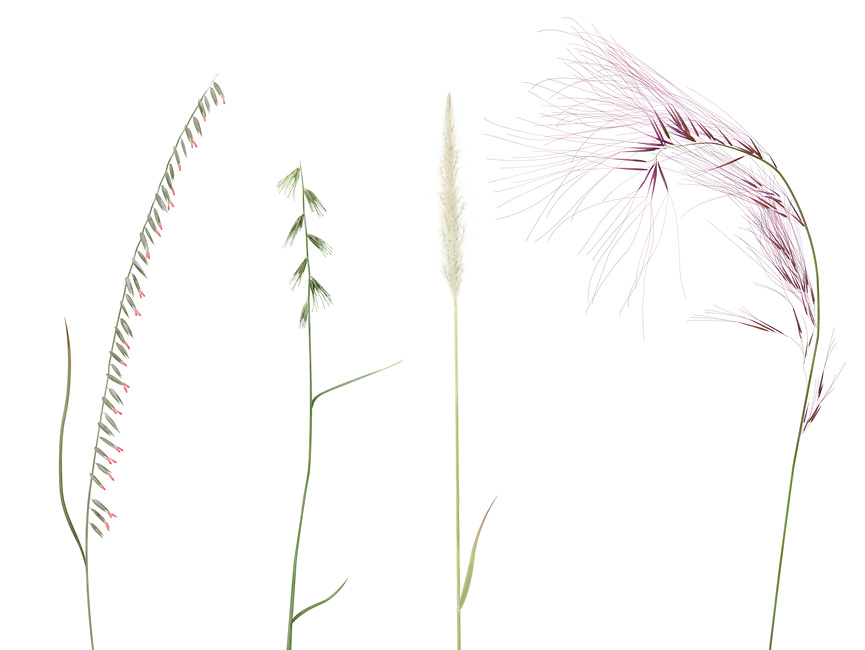Stay Grassy
Grasses can be some of the toughest plants to tell apart, even for plant nerds. But native grasses are worth getting familiar with because they are vital to healthy landscapes: They prevent erosion, absorb rainwater, improve air quality, anchor soil, mitigate flooding and look neat too. Michelle Bertelsen, a Wildflower Center ecologist and grass expert, says these four warm-season Texas grasses are common on roadsides and trails — and can even be identified from a car once you get to know them.
ILLUSTRATIONS Samantha N. Peters

SIDEOATS GRAMA (Bouteloua curtipendula)
Sideoats grama’s oatlike spikelets actually grow on both sides, but stalks bend over as they age, and the spikelets often droop to one side. This stunning peren-nial, which blooms from June through November, is Texas’ state grass.
TEXAS GRAMA (Bouteloua rigidiseta)
Texas grama’s spikelets turn from purplish to wheat colored as they dry; when grouped on one side of a stem, the whole affair resembles a toothbrush. Plants reach about 15 inch-es tall and bloom from April through November.
SILVER BLUESTEM (Bothriochloa laguroides)
If grasses were magical (and ecologically they pretty much are), silver bluestem would be your best pick for a wand. Its inflorescences burst forth in downy silver from May through November and are particularly beautiful backlit by sunlight.
PURPLE THREEAWN (Aristida purpurea)
This grass has three “awns,” or bristle-like appendages, reaching out of each seed like a trio of propellers. The awns stiffen and pale in fall, but they cast a purple haze on landscapes from April through July.

